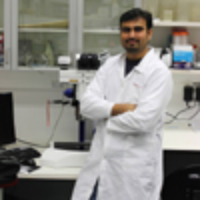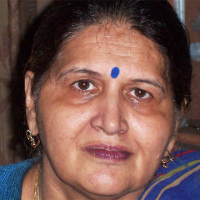Environmental impact assessment of demolition of a building in India-A case study
Published on: 3rd August, 2022
Buildings are demolished, when they outlived their service life, become structurally/functionally unfit, or have been built illegally. In India, an RCC framed, 40-storied high-rise building, with a built-up area of about 75,000 sqm, built without relevant approvals along with lots of violations of building bye-laws, has been demolished. There is nothing new in this demolition process, but its effect on the environment is unavailable. A study has been conducted to understand the environmental impact of this demolition. Based on the main primary construction materials, the embodied energy of this demolished building has been computed as 7.07 GJ/sqm.The civil construction cost of the building was found to be about INR 200 Crores (USD 27 million, assuming a conversion rate of 1 USD 75 INR in the year 2022). Expected GHGs emissions corresponding to this embodied energy were estimated as 42.42 × 103 MT. Energy in the demolition of the building has been computed to be about 8.7 GJ/sqm. The situation, in which this building can be retrofitted and made compliant with local building bye-laws, has been analyzed for its environmental impact.
Light beams, photons, axions
Published on: 2nd August, 2022
The question of the interaction of light with small particles, with molecules, atoms in gases, in liquids has been considered by many authors in the scientific literature. As a rule, this is elastic, Raman, or Rayleigh scattering. The frequency of the scattered light in the first case is the same as that of the incident, and in cases 2 and 3, the spectrum of scattered radiation is enriched with the corresponding components. The subject of this work is the interaction between each other in the medium of two coherent light beams.
Transcriptome-wide association study: Opportunity and challenges for cancer studies
Published on: 11th August, 2022
Genome-wide association studies (GWAS) have uncovered thousands of single nucleotide polymorphism (SNP) loci that are associated with complex traits. However, the majority of GWAS discoveries are located in non-coding regions and the biological mechanisms behind these associations are not well understood. Transcriptome-wide association studies (TWAS) have gained popularity in recent years by generating biological interpretable discoveries and facilitating the identification of novel associations that have been missed by GWAS. TWAS has identified more than hundreds of susceptibility genes for many complex diseases and traits, including cancers. Here, in this review, we first summarize TWAS methods, then discuss the opportunities for cancer studies and finally review current challenges and future directions for this method.
Bio-inspired fabrication of zinc oxide nanoparticles: Insight into biomedical applications
Published on: 11th August, 2022
Nanotechnology is starting the characterization, fabrication, and possible applications of numerous materials at the Nano-scale. Over the last few eras, nanomaterials provide a platform for researchers from diverse arenas due to the high surface-to-volume ratio and other novels, and new significant belongings. Zinc oxide nanoparticles are receiving diverse biomedical applications because of their distinctive antimicrobial, antioxidant, anticancer, antifungal, antileishmanial, anti-larvicidal, wound healing, anticholinergic, and anti-diabetic properties. Different physical and chemical approaches have been used to synthesize zinc oxide nanoparticles, but these methods cause ecotoxicity and are time-consuming and costly. Therefore, there is a need for more eco-friendly, cost-effective, and safe methods. Such biogenic Zinc oxide nanoparticles offer more advantages over other physiochemically synthesized methods. In this review, we have summarized the recent literature for the understanding of the green synthesis of Zinc oxide nanoparticles, their characterization, and their various biomedical applications.
The “manna” extracted from the ash trees still cultivated in Sicily from mythical food to pharmaceutical and nutraceutical resource
Published on: 30th August, 2022
“Manna” is the product obtained from the solidification of the elaborate sap that comes out of the incisions made during the summer season on the stem and on the main branches of some species of the genus Fraxinus (Oleaceae). The cultivation of manna ash trees dates back to ancient times in Sicily and elsewhere ash trees – known as sacred trees, a symbol of abundance and therefore auspicious – was increasingly widespread until the middle of the last century. Subsequently, however, the crop underwent a progressive decline, remaining relegated to restricted areas of Sicily, in particular in the Madonie district (Palermo, Italy). In this brief review, the essential characteristics of the manna and the ash trees from which it is extracted are summarized. The aspects of the current productivity of manna in the Sicilian territory and the implications of a potential recovery and increase of an ancient craft, ash tree cultivation, are also reported in a perspective of sustainable development and green economy for the Mediterranean area and beyond. Finally, the authors remember what has been done to ensure the conservation not only of the active cultivation of manna ash but also of all the relative agro-biodiversity. The conservation of the living germplasm of the ancient cultivars recovered in the Madonie area (Palermo, Sicily) represents one of the most qualifying results.
Post-vaccine immunity against hepatitis B in Moroccan children
Published on: 2nd September, 2022
OCLC Number/Unique Identifier: 9617320088
Background: Hepatitis B is a major public health issue worldwide. Immunization of infants against this disease has been effective in Morocco since 1999. However, evaluation of post-vaccination response is rarely performed in our setting. The purpose of this study was to evaluate immunity against HBV in fully vaccinated children in the city of Marrakech in Morocco and to investigate the factors influencing the level of post-vaccination immunity. Methods: A descriptive cross-sectional study was conducted on fully vaccinated children who have medical and vaccination records, from three primary healthcare centers in Marrakech. Children with anti-HBs antibody levels between 10 and 100 IU/L were considered moderately immune, and those with antibody levels above 100 IU/L as highly immune, while those with antibody levels below 10 IU/L were considered non-immune. Results: Of the 123 children recruited, 114 (92.7%) had protective anti-HBs antibody titers, of which 37 (30%) were moderately immunized and 77 (62.7%) were highly immunized, and nine (7.3%) were non-immune. Age, birth weight, vaccine type, and time since the previous dose have all been significantly associated with the degree of post-vaccination immunity. Anti-HBs antibody levels were not significantly related to factors potentially linked to post-vaccination non-response, such as chronic disease, immunosuppressive medication and others.Conclusion: Our findings denote that the HBV vaccine used in The Moroccan Expanded Program on Immunization (EPI) is effective against HBV. Nevertheless, in non-responders, corrective actions such as re-vaccination and monitoring of post-vaccination anti-HBs antibody levels should be implemented.
Fabrication of novel Co3O4@GO/La2O3 nanocomposites as efficient, innovative and recyclable nanocatalysts for the synthesis of quinazolinone derivatives under solvent-free conditions
Published on: 2nd September, 2022
For the first time, this research has developed an efficient and novel approach to high to excellent yields for synthesizing Quinazolinone derivatives. Also, the synthesis of Quinazolinone derivatives has been carried out in the presence of Co3O4@GO/La2O3 nanocomposite as a novel heterogeneous catalyst and a green under solvent-free conditions and in a short time and excellent yields for the first time. Various structural and morphological characteristics of the nanocatalyst were employed for the catalyst characterization, such as FT-IR, XRD, FE-SEM, EDX and VSM analyses. All characterization data were checked with each other so that the structure of the nanocatalyst was exactly characterized. The reactions were carried out in the presence of a low amount of nanocatalyst at 100 °C under solvent-free conditions for a short period of time. The proposed nanocomposite exhibits excellent catalytic activity. One of the most important advantages of this method is easy magnetic nanocatalyst separation, green condition, excellent recoverability and easy workup.
SARS-CoV-2 Omicron and centaurus variants induced lymphocytopenia: A multicenter clinical investigation on 118,561 cases across Pakistan during 2021-2022
Published on: 16th September, 2022
The SARS-CoV-2 pandemic is still ongoing. Previously, several studies have been conducted to investigate laboratory markers as a tool for severity assessment during COVID-19 infections. Biological markers such as Platelet count, D-dimer and IL-6, Lymphocytopenia and others have been used for assessment of severity in COVID-19 disease patients (infected by SARS-CoV-2 Alpha, Beta, Gamma, Delta, Epsilon, and other variants). We observed a significant drop in lymphocyte count among suspected SARS-CoV-2 clinical patients with symptoms of fever, running nose, breathing discomfort, cough, and others during Omicron and Centaurus variants spread in Pakistan. A multicenter, cross-sectional study was conducted from Jan 2021 to Aug 2022, on 118,561 subjects to evaluate hematological abnormalities among suspected patients. Of note, significantly decreased lymphocyte levels (lymphocytopenia) were observed among 43.05% of infected patients. Also, the levels of NA (39.03%), HGB (28.27%), MCV (22.62%), PLT (8.17%), and ALB (4.30%) were also reduced among infected patients. This suggests that lymphopenia can be used as an alternative, cost-effective, early diagnostic biomarker for clinical COVID-19 patients, even before the diagnosis via real-time PCR. In resource-limited countries, the current study is critical for policy-making strategic organizations for prioritizing lymphocytopenia-based screening (as an alternative, cost-effective diagnostic test) in clinical COVID-19 patients, before real-time PCR-based diagnosis.
Identification, characterization of candida species isolated from cases of vulvovaginal candidiasis along with their antifungal susceptibility by vitek-2 system
Published on: 29th August, 2022
One of the most severe threats to world health is the Candida species. Many non-Candida species are the major cause of vulvovaginal candidiasis (VVC). During the development of VVC, the host environment and Candida vaginal colonization are assumed to be out of balance, and this might be owing to physiological or non-physiological changes. Host-related and behavioral risks have been connected to VVC. Novel antifungal medications with particular molecular targets may be developed with the use of molecular tools in epidemiological research and the study of resistant Candida species. Using the Vitek-2 Antifungal Susceptibility System, this review will explain the many approaches used to identify and characterize Candida species isolated from vulvovaginal candidiasis patients.
Boron neutron capture therapy for the treatment of lung cancer and assessment of dose received by organs at risk
Published on: 16th September, 2022
Recent studies on boron neutron capture therapy (BNCT) have focused on investigating the appropriate neutron sources based on accelerators for neutron production, such as 7Li(p,n)7 Be. The therapeutic abilities of BNCT have been studied for the possible treatment of lung cancer using thermal and epithermal neutron beams. For neutron transport, the Monte Carlo N-particle transport code was used, and doses in the organs of different Oak Ridge National Laboratory phantoms were evaluated. The right lung was meshed with voxels to obtain depth-dose distributions using 1 eV, 10 eV, 100 eV, 1 keV, 5 keV, 8 keV and 10 keV energy sources. These results suggest that BNCT with an epithermal neutron beam can be used to treat lung cancer. By evaluating the biological dose rate and dose-depth distribution curves in healthy tissues and tumors by simulating a lung phantom, the quantities in the phantom were also evaluated. Our calculations show that with increasing boron concentration applied to the tumor, the dose is increased and the 100 eV energy source has the greatest effect on the tumor dose.
A new mandibular anchoring technique
Published on: 27th September, 2022
Posterior anchorage in the mandible has always been difficult to obtain during our orthodontic treatments. We tried a large number of screw anchors and plate systems which gave us quite acceptable clinical results but had many drawbacks.
New insights of liquid biopsy in ovarian cancer
Published on: 29th September, 2022
Through the development of new analysis technologies, many issues regarding the approach to tumoral diseases have been elucidated. With analytical assays developed in the last years, various omics technologies have evolved in such a manner that the characteristics of tumor cells and products can be evaluated (assessed) in the bloodstream of cancer patients at different times. Ovarian Cancer (OC) is one of the most difficult to diagnose umors, with low survival rates due to the high heterogeneity of these diseases that are distinct in terms of etiology and molecular characteristics, but which simply share an anatomical appearance. Recent findings have indicated that several types of ovarian cancer classified into different histotypes are in fact derived from non-ovarian issues and share few molecular similarities. Within this context, ovarian cancer screening and diagnosis can be made through the evaluation of circulating tumor cells in peripheral blood using liquid biopsy technologies. Advances in the study of various molecules analyzed by liquid biopsy have shown that elucidation of intratumoural and intertumoural heterogeneity and spatial and temporal tumor evolution could be traced by serial blood tests rather than by histopathological analyses of tissue samples from a primary tumor. Therefore, evaluation of some molecules such as circulating tumor cells (CTC), circulating tumor DNA (ctDNA), circulating cell-free RNA (non-coding and mRNA, extracellular vesicles), tumor-educated platelets or different miRNAs using liquid biopsy could lead to improvement of patient management.
Identifying mothers experiencing emotional distress in the neonatal intensive care unit. Application of PPTSD questionnaire in a Greek NICU population
Published on: 7th October, 2022
The birth of a high-risk infant such as an extremely premature infant can represent an important traumatic experience for mothers. Perinatal Post Traumatic Stress Disorder Questionnaire (PPTSDQ) explores retrospectively maternal post-traumatic stress reaction. This shelf-rating questionnaire explores the potential for experiencing posttraumatic symptoms related to childbirth and the ensuing post-natal period. The PTSD questionnaire was originally developed by DeMier and Hynan and their colleagues at the University of Wisconsin and has been widely used in research and in clinical practice for identifying mothers experiencing significant emotional distress during the post-natal period, so they may be referred for mental health services. The present study aims to introduce this tool in perinatal settings as an early intervention. It has been widely used with other measures of post-traumatic stress and depression, such as the Openness Scale from the NEO-PR, the self-report measure of depression BDI-II, the IES (Impact Event Scale) and the EPDS (Edinburgh Postnatal Depression Scale). Although already a useful clinical instrument the current study used the revised version. This modification refines the response options from dichotomous choices to a Likert scale format by Callahan Borja and Hynan. Numerous qualitative and quantitative studies state that premature delivery is a highly stressful event and document the full range of post-traumatic sequelae, such as intrusive recollections, behavioral avoidance, and hyperarousal, as well as attachment difficulties following childbirth. Furthermore, the severity of neonatal complications and gestational age have been found to be predictive of PTSD symptomatology in parents as measured by the PPQ. For this reason, the current study aims to give increased focus to mothers having a premature birth and often expecting their children to die. The sample comprises 25 mothers of prematurely born infants hospitalized in the NICU and 25 mothers of full-term infants born in the maternity ward of the same Greek hospital who responded to the Perinatal PTSD Questionnaire and equally the PERI a postnatal complication rating inventory and the clinical interview for parents CLIP.Mothers of high-risk infants present post-traumatic stress reactions related to prematurity. The Perinatal PTSD Questionnaire identifies postnatal maternal distress but should not substitute a clinical interview, yet findings indicate that equally identifies pre-existing distress symptoms associated with maternal personality traits that emerged with the traumatic event of the unexpected birth.Due to the consistency of the population of the experimental group, who come mostly from the provinces, the possibility of a follow- up of the cases is quite limited.
A surgical procedure for re-implanting a tooth that has been rendered hopeless because of periodontitis: a case report
Published on: 7th October, 2022
Aim and methodology: This article describes a periodontally compromised, hopeless incisor tooth that was purposefully replanted, along with the results after six months. This entails the deliberate removal of the tooth and its subsequent correct manipulation and endodontic restoration before reinserting it into the socket.Results: Hopeless lower incisors with periodontal involvement were transplanted utilizing an implant surgical drilling approach after receiving root canal therapy and tetracycline-HCI conditioning. Bone graft material was added and the procedure was monitored for six months. The tooth was observed to be asymptomatic, functioning normally, and showing no pathologic radiological changes. With minimal bleeding during probing and no growth of pathological pockets, the periodontal condition was within normal limits. Alveolar bone support was seen to be adequate. The results may suggest that, in some circumstances, purposeful replantation is a viable strategy of treatment for maintaining native dentition.Conclusion: Intentional tooth reimplantation can be an alternative treatment option for periodontally involved teeth with poor or hopeless prognoses.
Rehabilitation protocol with VISS system and human synergy mat in subjects with flat foot problems in developmental age
Published on: 18th October, 2022
The flat foot can be defined as a syndrome with multiple etiopathogenesis, characterized by an altered structure of the longitudinal arch of the plantar vault with its reduction in height. The plantar arch collapse can be counteracted by strengthening the muscles involved; for many years, specific physical exercises have been proposed for this purpose in physical and rehabilitation medicine. Our work aimed to improve the plantar arch muscles’ tone using high focal vibration therapy (300 Hz). Methods: 49 children with a 3rd degree flat foot (age: 8,7,6) underwent 10 sessions, 2 days/wk, of 30 min of focused high vibratory therapy at a frequency of 300 Hz (Vissman, Italy). Before and after treatment stabilometry (StT), static and dynamic baropodometry tests were performed. Results: Evaluation of StT showed an improvement in stability and a decrease in the sway area and ellipse area. Baropodometry tests showed a decrease in foot surface. Also, dynamic tests showed a decrease in both foot surfaces. Discussion: The results lead us to consider this method as a method of the first choice for a conservative approach in the rehabilitation of flat foot syndrome and also for 3rd grade children [1,2].
Assessment and treatment of patients with kinesiophobia: A Delphi consensus
Published on: 26th October, 2022
Kinesiophobia is described as pain-related fear of movement and plays a role in the development of chronic musculoskeletal pain. Several approaches have been described in the literature, but there does not seem to be a consensus on the most appropriate way to evaluate and treat patients with kinesiophobia. The aim of this study was to identify clinically relevant assessments and treatments recommended by a consensus of experts. Fourteen experts were identified to participate in a three-round internet-based Delphi study. Participants were asked to propose assessments and treatments (round 1), to grade each proposal on a Likert scale of 9 (round 2), and to reassess their level of agreement (round 3). The consensus was defined with 75% agreement. Five methods of assessment and six treatment approaches reached a consensus. The TAMPA scale reached the top position as an assessment of kinesiophobia. Graded exposure to movement, cognitive and behavioral therapy, and pain neuroscience education were the highest-rated interventions. These results provide the first expert consensus on preferred assessments and treatments for patients with kinesiophobia and correspond with the evidence base in the literature.
Nutritional interventions for the prevention and treatment of neurological disorders such as anxiety, bipolar disorder, depression, epilepsy, multiple sclerosis, and schizophrenia
Published on: 11th November, 2022
Neurological disorders are a significant cause of mortality and disability across the world. The current aging population and population expansion have seen an increase in the prevalence of neurological and psychiatric disorders such as anxiety, bipolar disorder, depression, epilepsy, multiple sclerosis and schizophrenia. These pose a significant societal burden, especially in low - and middle-income countries. Many neurological disorders have complex mechanisms and lack definitive cures; thus, improving our understanding of them is essential. The pathophysiology of neurological disorders often includes inflammation, mitochondrial dysfunction and oxidative stress. Oxidative stress processes, especially the generation of reactive oxygen species, are key mechanisms in the development of neurological disorders. Oxidative stress refers to an imbalance between the production of reactive oxygen species and antioxidants that can counteract them. Through their impacts on the pathophysiology of neurological disorders, nutrients with anti-inflammatory, neuroprotective and antioxidative properties have been suggested to prevent or mitigate these disorders. Certain vitamins, minerals, polyphenols and flavonoids may have therapeutic effects as adjuvant treatments for neurological disorders. Diet quality is also a risk factor for some neurological and psychiatric disorders and addressing nutritional deficiencies may alleviate symptoms. Therefore, optimizing nutritional intake may represent a potential treatment or prevention strategy. This review summarizes a selection of promising nutrients for the prevention and amelioration of neurological disorders to provide a summary for scientists, clinicians and patients, which may improve understanding of the potential benefits of nutrients in the treatment of neurological disorders.
COVID-19 pandemic to endemic
Published on: 7th November, 2022
The COVID-19 pandemic appeared in late 2019 and became a major health concern with rapid transmission and very high mortality rates across the globe. Although precautionary, preventive, protective and therapeutic measures have been adopted against COVID-19, still the disease has drastically affected people. In order to overcome the challenges of the pandemic, the understanding of the route of transmission, its fusion with receptors and invasion into the human body and hacking the immune system, the viral genome was sequenced. The viral genome keeps on mutating and altering its original form into its subtypes. Moreover, age and comorbid conditions had their impact on developing the disease differing from individual to individual due to interaction varying between the host genome and virus. Considering the pathogenesis of the virus, neutralizing antibodies reduced the viral impact and severity. This review is focused on highlighting the COVID-19 genome, host genetic factors, the pathogenesis of the disease and available therapeutic measures to overcome the pandemic.
Pseudomonas stutzeri meningitis in a patient with post-laminectomy CSF leak and infected pseudomeningocele: a case report
Published on: 11th November, 2022
Spine degenerative surgeries are very common but carry multiple complications such as dural tears, CSF leak, pseudomeningocele and very rarely meningitis. Here we report such a case and discuss the possible causes, management and review of the literature.It’s a case of a 68-year-old man who underwent a posterior laminectomy that was complicated by a CSF leak and pseudomeningocele. Twelve days later the patient developed a severe bifrontal headache and then altered sensorium. CSF studies revealed severe meningitis with Pseudomonas stutzeri. It was multi-sensitive and after initiation of gram-negative coverage the patient markedly improved. However, the meningitis was further complicated by cerebral venous sinus thrombosis and he was also started on anticoagulation.Conclusion: Pseudomonas stutzeri has rarely been reported as a cause of meningitis and has never been reported post-laminectomy. Meningitis symptoms and signs could be obscured by the use of steroids in the postoperative period. Hence, it is of paramount importance to look for any subtle signs of infection in the postoperative period and question the use of high-dose steroids that could easily mask them.
How to avoid partial implantation of people with cochlear malformation
Published on: 14th November, 2022
Many advances have been made in recent years in the development of hearing and cochlear implants. These use acoustic and electrical stimulation technologies to improve speech intelligibility for the hearing impaired. However, for cochlear prostheses, the results are not very promising and vary from one patient to another. Certain technical and sometimes physiological problems have limited the expected performances of these devices, especially for children and the elderly. These problems include cochlear malformation and ossification of the auditory channels. This led us to reduce the number of electrodes in order to allow quality deep insertion while preserving the low-frequency acoustic bands of the operated patient.




